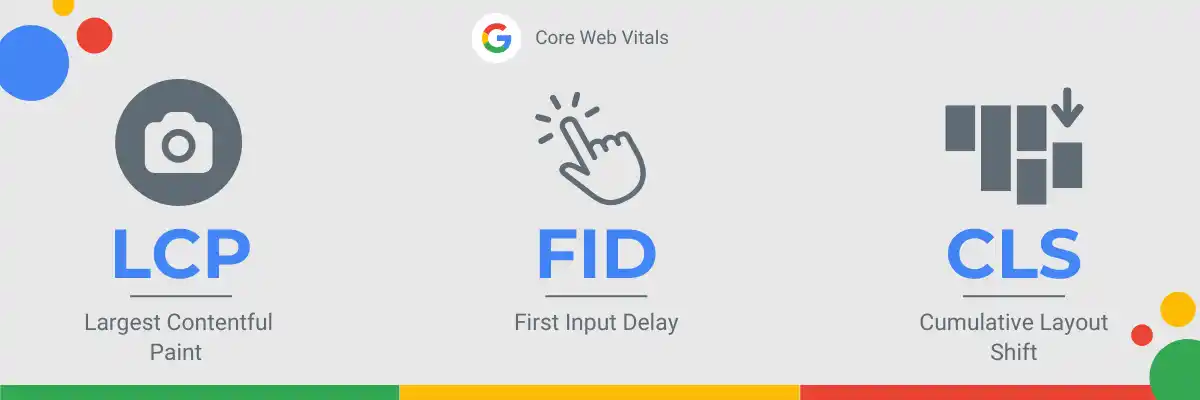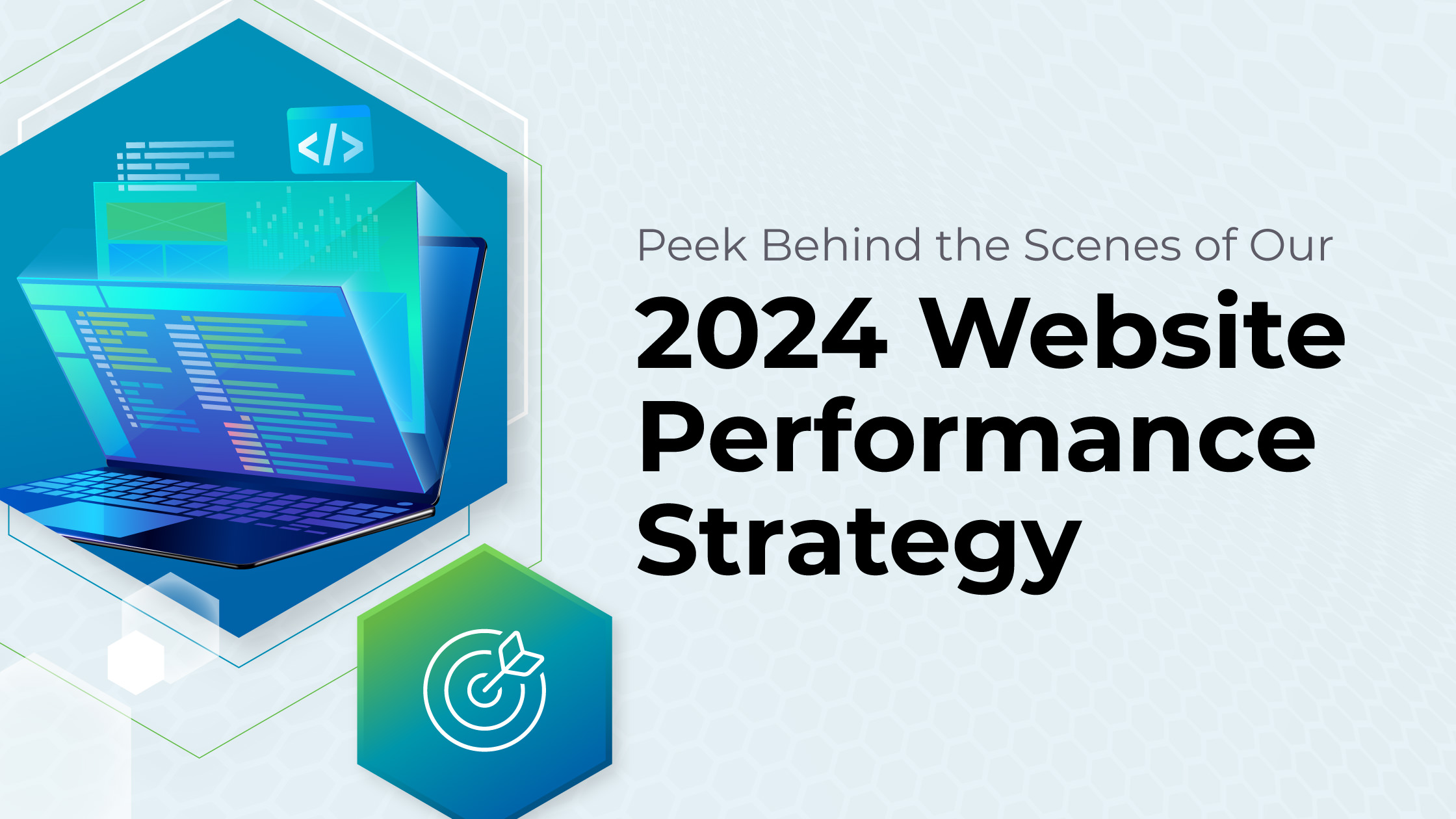Back in late May 2020, Google launched Core Web Vitals (CWV), which is a subset of web vitals meant to give you universal metrics for measuring page performance.
But lately, buzz has been growing about something else called Interaction to Next Paint (INP).
So what are these two things exactly? Is INP going to override Core Web Vitals? Or does performance marketing now require aptitude in both? Can someone please make it make sense??!
Hello! It’s us. We’re here to make it make sense.
You’re about to get a crash course in INP, but that requires starting with a basic understanding of Core Web Vitals, so here’s what you can expect below:
- What is Core Web Vitals?
- How much does Core Web Vitals affect SEO rankings?
- How much does Core Web Vitals affect UX?
- Does First Input Delay (FID) matter anymore?
- What is Interaction to Next Paint (INP)?
- Is INP replacing FID?
- How can you measure INP?
- Summary
What is Core Web Vitals?
After a decade of only making roughly 20-100 algorithm updates per year, Google decided that 2020 was the year to roll out 3800+ updates in one shot. This huge collection was called Core Web Vitals.
Put simply, CWV is Google’s way of saying that user experience is their bestie and if you don’t shower their bestie with flowers and gifts galore, they’re going to make your life a nightmare by restricting your ability to rank for your target keywords.
Did you catch that?
The introduction of CWV means that even with top notch content, strategically-selected keywords, backlinks, a brand story that would inspire even the biggest cynics, and expert UX design…
Even with all that, if your site’s load time leaves anything to be desired, you’ll be lucky to make it past page 4 of the SERPs.
So you see why Core Web Vitals is a BIG deal, right?
(We double-take whenever we meet a brand without a CWV-specific Google strategy. This should be the foundation of every digital marketing optimization strategy.)
Under the broad umbrella of CWV are three metrics that you should be aware of. Here’s a quick overview of each and what they measure:

1. Largest Contentful Paint (LCP)
How long does it take for the largest single piece of content to load on any page on your site? This could be anything from text to images to videos. LCP helps to suss out the most offensive elements on your page (yes, even top tier brands have some) and make adjustments for a better user experience.
2. Cumulative Layout Shift (CLS)
How much does the page layout change once the initial load time is complete?
This metric is a helpful indication of the overall visual stability of your site.
3. First Input Delay (FID)
How long does it take for your site to react to the first interaction from the user?
What delay, if any, is there between a click, and a response from your page?
How much does Core Web Vitals affect SEO rankings?
There are Google details we know, and then there are Google details that they’re keeping extra quiet – the precise degree to which CWV impacts your SEO rankings is one of the latter.
However, on August 6, Google’s John Mueller jumped on Reddit to weigh in about CWV:
“It is a ranking factor, and it’s more than a tie-breaker, but it also doesn’t replace relevance.”
Google won’t say how much of a ranking factor CWV is, but it is a factor, so growth marketers should be taking note.
CWV has pushed both brands and their content management systems to optimize their web properties for users. These metrics help you know when something is wrong, but it doesn’t guarantee breakout success in the world of SEO. That only happens by creating valuable content that is relevant to what people are searching for, when they’re searching for it, and ensuring that they can access and interact with that content seamlessly. And fast!
How much does Core Web Vitals affect UX?
A lot. CWV will let you know quickly if you’ve got an issue that will impact user experience.
For example, if your largest piece of content is taking forever to load and causes your layout to shift, LCP and CLS will let you know. Or, if for some reason, your FID is ranking low, that’s an indication that you have an input delay that needs addressing.
Google views your site as a car and your users as the car’s VIP passengers who should be given the 5-star treatment every step of the way. CWV is your “Check Engine!” light telling you that your passengers aren’t getting the quality of experience they want, and you need to remedy that immediately.
But despite the massive influence of CWV, one of the metrics in the bunch has come into question. Let’s talk about our old friend, FID…

After 2 years of Core Web Vitals, does First Input Delay (FID) matter anymore?
CWV was designed to be a one-stop shop; the end-all-be-all metrics of web performance.
But they were launched two years ago, which is basically a millenia in the shifting sands world of digital marketing. So where does CWV stand today?
For the most part, CWV is still a vital reference point for any brand who’s interested in SEO rankings improvements. But there’s a but…
First Input Delay (FID) has progressively become less and less useful because the major content management systems have optimized for it. Google has confirmed that in 2022, FID now has a global 95% pass rate, meaning that most pages are scoring under 200 ms. in their “good” range.
So since widely-used platforms like WordPress and Wix are now consistently providing good FID scores, is the FID metric of any use?
Just because your gas tank light isn’t on, that doesn’t mean you’ve got a full tank. So yes, you do need a more valuable metric to show where on that sliding scale of responsiveness you actually are. Nowadays, FID is a super low bar to clear. Too low, in our opinion.
That being said, if your FID score is in the red, you’re now in the minority of sites in that metric and you should consider that an emergency to be rectified immediately.
Since FID leaves a lot to be desired, this brings us to INP…
What is Interaction to Next Paint (INP)?
At Google I/O in May 2022, Google announced a new experimental metric that they promised would offer a more holistic approach to responsiveness: Interaction to Next Paint (INP).
Rather than simply measuring the delay in response to the first input (FID), INP takes into account your site’s responsiveness to all interactions, thereby functioning as a full-page lifecycle metric.
There could be serious quality dropoffs in user experience after the first interaction and FID just flat out won’t look that far. So why doesn’t Google just adopt INP and toss FID?
Is INP replacing FID?
Again, Google keeps their cards close to the chest, so we don’t know this answer for sure. Yet.
Due to the experimental nature of INP, it hasn’t been officially tapped to replace FID. But in practice? It kinda already has replaced it.
For the reasons we mentioned above, FID scores are looking good for just about everyone. Celebrating it is a bit like patting yourself on the back for a traffic light turning green – it’s just doing what traffic lights do. You can’t take credit for it.
So if FID isn’t the metric to focus on for improving your UX so you can improve your search rankings, is INP what you should be optimizing instead? Absolutely, yes.
How can you measure INP?
Google’s backend will produce your INP score based on an approximation of all the interactions a user can encounter on your site, and the site’s response time throughout the lifecycle.
A score of 200 ms or less is good, 200-500ms needs improvement, and greater than 500 is considered poor.
INP can also be measured through a variety of tools.
Summary
The last two years of Core Web Vitals have correlated with a surge in the overall quality of content we consume online. As a result, the importance of UX has only increased, and SEO performance is now also driven by content instead of just page optimizations – as it should be.
We suspect that Core Web Vitals will evolve in order to adopt INP over FID, but without a clearer indication from Google yet, the jury is still out. So what should you be doing in the meantime?
Watch and optimize both.
Attending to both metrics means that you’re continually looking for ways to improve the user experience and quality of the content you’re putting out. No matter how you slice it, that course of action will always lead to rankings growth.




